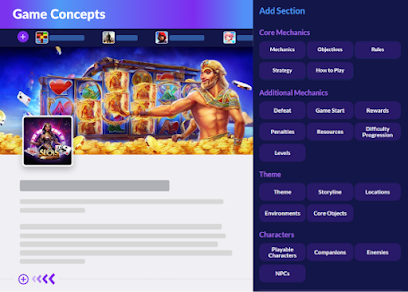Creating a successful video game involves more than just coding — it requires compelling ideas, unique artwork, and a clear direction. Whether you're an indie developer or part of a larger studio, integrating tools like a Video Game Ideas Generator, mastering Artwork For Games, and understanding How To Make Game Art can significantly elevate your game development process. In this blog post, we’ll explore how these elements work together to turn your game concept into a playable, visually appealing experience.
Why Use a Video Game Ideas Generator?
Every developer faces creative blocks. That's where a Video Game Ideas Generator becomes incredibly valuable. This digital tool provides randomized or structured game concepts, plot ideas, character profiles, and gameplay mechanics. By using an ideas generator, developers can:
- Jumpstart brainstorming sessions
- Discover genres they hadn’t considered before
- Combine unexpected elements for unique gameplay
- Avoid generic or overused ideas
Game idea generators are especially useful during game jams, rapid prototyping phases, or when you’re simply stuck. While these tools don’t replace creativity, they inspire it—offering a springboard for your imagination to leap from.
The Role of Artwork For Games
After establishing your game’s concept, the next major step is creating compelling visuals. Artwork For Games sets the tone and atmosphere. It influences how players connect with your world, characters, and story. Art can be minimalist like in indie hits such as Celeste, or highly detailed like in Horizon Zero Dawn. The choice depends on your audience, platform, and genre.
Key areas of artwork in games include:
- Character Design: How the player or NPCs look and feel.
- Environment Art: The world your game is set in—be it a post-apocalyptic city or a colorful alien planet.
- User Interface (UI) Art: Menus, buttons, HUDs—all elements that players interact with.
- 2D and 3D Assets: Depending on the engine you’re using (Unity, Unreal, Godot), you’ll need to tailor your assets accordingly.
Incorporating strong artwork enhances engagement, makes your game stand out, and often influences the overall rating and reception.
How To Make Game Art: A Beginner’s Guide
Learning How To Make Game Art doesn’t require a formal art degree, but it does take practice and the right tools. Depending on your style and game type, here are some recommended steps:
Choose Your Art Style
Decide if your game will be pixel art, vector-based, hand-drawn, or 3D modeled. Your choice should align with the game's tone and your team’s skill level.
Pick the Right Tools
Popular tools for making game art include:
- Photoshop or Krita for 2D painting and UI design
- Aseprite or Piskel for pixel art
- Blender or Maya for 3D modeling and animation
- Spine or DragonBones for 2D skeletal animation
Sketch & Conceptualize
Start with sketches or wireframes. These are rough visuals of characters, UI layout, or environments. Get feedback early.
Create and Iterate
Build your first asset, test it in the game engine, and improve. Art should evolve as gameplay mechanics and user experience develop.
Optimize for Performance
Large textures or uncompressed files can slow down your game. Make sure to optimize images, use texture atlases, and limit draw calls.
Stay Consistent
Art consistency is crucial. Keep color palettes, lighting, and scale uniform to maintain a cohesive visual identity.
Final Thoughts
Combining a Video Game Ideas Generator with knowledge of Artwork For Games and skills in How To Make Game Art gives any game developer a powerful edge. These tools and practices help you go from idea to execution smoothly, saving time while boosting creativity and quality.
Whether you're building a casual mobile game or a rich RPG, the synergy between innovative ideas and compelling visuals is key to success. So embrace these tools, refine your workflow, and start creating games that people will love to play and remember.




.jpeg)

.jpeg)

